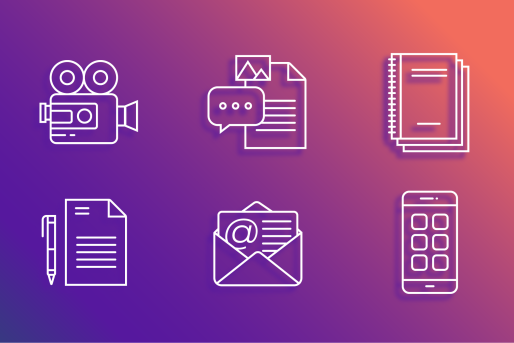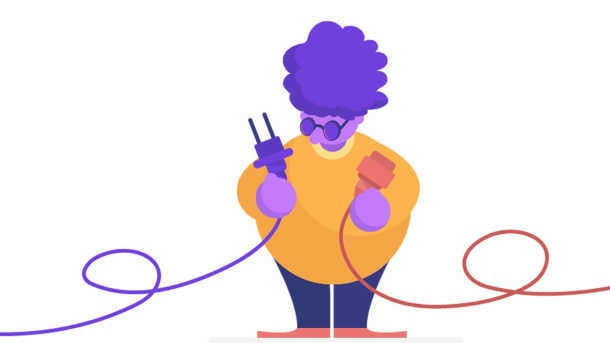Expanding your business into new regions, territories or markets can be an exciting — yet often overwhelming — challenge. Reaching new audiences and keeping them engaged for the long term is critical to a company’s success — but successfully achieving these objectives is easier said than done, especially when faced with the nuances of marketing at a global scale.
As access to information and on-demand services increases around the world, a brand’s ability to respond to customer needs becomes increasingly complex. 94% of consumers discontinue brand relationships if messaging is off base, so the margin between a click or an unsubscribe is razor-thin when a brand misses its mark.
Consumers trade a wealth of data in exchange for (what should be) better customer experiences, but most businesses are doing a poor job picking up on their customers’ digital body language: 80% of consumers receive inconsistent brand messaging across channels.
Your content should be personalized and seamlessly delivered to your audiences — wherever they are. Accomplishing this with finesse boils down to two key elements: your marketing strategy and the technology you use to turn that strategy into action.
In this article, we’ll dive into how you can enhance both for world-class, omnichannel campaigns.
Optimizing Your Marketing Strategy For Translation
When entering new markets, it’s important to recognize that your current content strategy may not translate properly and achieve the same results. Maintaining a growth mindset toward continued improvement will provide a much-needed perspective on the messages you typically send to your audiences.
Here are three key areas of focus to re-evaluate to ensure that you’re prepared to meet the needs of your new audience:
Channel preferences. Taking an omnichannel approach to marketing does not necessarily mean treating all channels equally. For instance, research shows that consumers in China prefer to communicate via text, while those in Japan favor email. However, these preferences can also vary according to age, gender, and lifestyle, so it’s important to test — and ask! — how your subscribers would like to receive brand messages.
Send time and frequency. To expand on the previous point, just because an individual designates email as their primary method of communication does not equate to consenting to multiple mass blasts per day. Today’s tools can enable marketers to run send-time experiments and leverage artificial intelligence to optimize message frequency automatically, so your “surprise and delight” program doesn’t accidentally lead to “anger and unsubscribes.”
GDPR compliance. If you’re planning to enter or expand into EU markets specifically, then you’re likely already aware of the General Data Protection Regulation and its impact on marketing. In addition to providing customers the ability to share their channel and frequency preferences, a subscription center is an excellent way to receive their explicit consent. Check out our GDPR cheat sheet for more initiatives to enact now for a comprehensive compliance strategy.
Committing to an omnichannel marketing strategy is only half the battle; you must also invest in best-in-class technology to power personalized service.
Upgrading Your Marketing Technology For Translation
To successfully evolve your content strategy for new markets, it’s not only vital to adapt the messages you send, but also evaluate the tools you use to send them. Legacy platforms were built for developers — not marketers — so they’re unable to respond to customer needs in real time.
Here are three reasons why your team needs to upgrade its marketing technology stack:
- Eliminate inconsistent consumer experiences.
Inconsistency is typically seen when marketing teams use multiple point solutions for each channel. In fact, when you consider that the average marketing stack consists of 12 or more tools, it’s no wonder why most teams aren’t delivering seamless experiences. When you’re using different tools to send email, direct mail, and mobile messages, your customers will notice those differences — and not in a good way.
- Prevent ineffective internal communication.
Not only is it common for a marketing team to use siloed technologies, most organizations are also internally siloed. When transactional and marketing emails are sent by different teams or brands within a larger corporation aren’t in sync, misalignment is bound to happen. How can you expect to talk with your customers effectively if your team doesn’t communicate well with others in the business?
- Improve data flexibility for advanced personalization at scale.
In the global economy, every consumer expects to be treated like a VIP — no matter what time zone they’re in. For marketers, this means delivering 1:1 messaging that fosters an ongoing dialogue with each individual. To enable that level of hyper-personalization, next-gen technologies offer robust user profiles with an unlimited number of data points. With all essential customer information in one place, it’s then easy to trigger dynamic, behavior-based messages that are tailored specifically to each subscriber.
You shouldn’t need dozens of different tools or an army of engineers to build and deploy a campaign in a new market. Modern growth marketing platforms like Iterable can enable real-time messaging across email, direct mail, mobile, web and social. Their open architecture easily integrates with leading global solutions, including translation management systems like Smartling.
Learn how Iterable powers personalized, omnichannel marketing at scale by visiting our website.
Guest Post by Alyssa Jarrett Alyssa Jarrett is the Senior Content Marketing Manager at Iterable, the growth marketing platform that powers true omni-channel relevance at scale.






